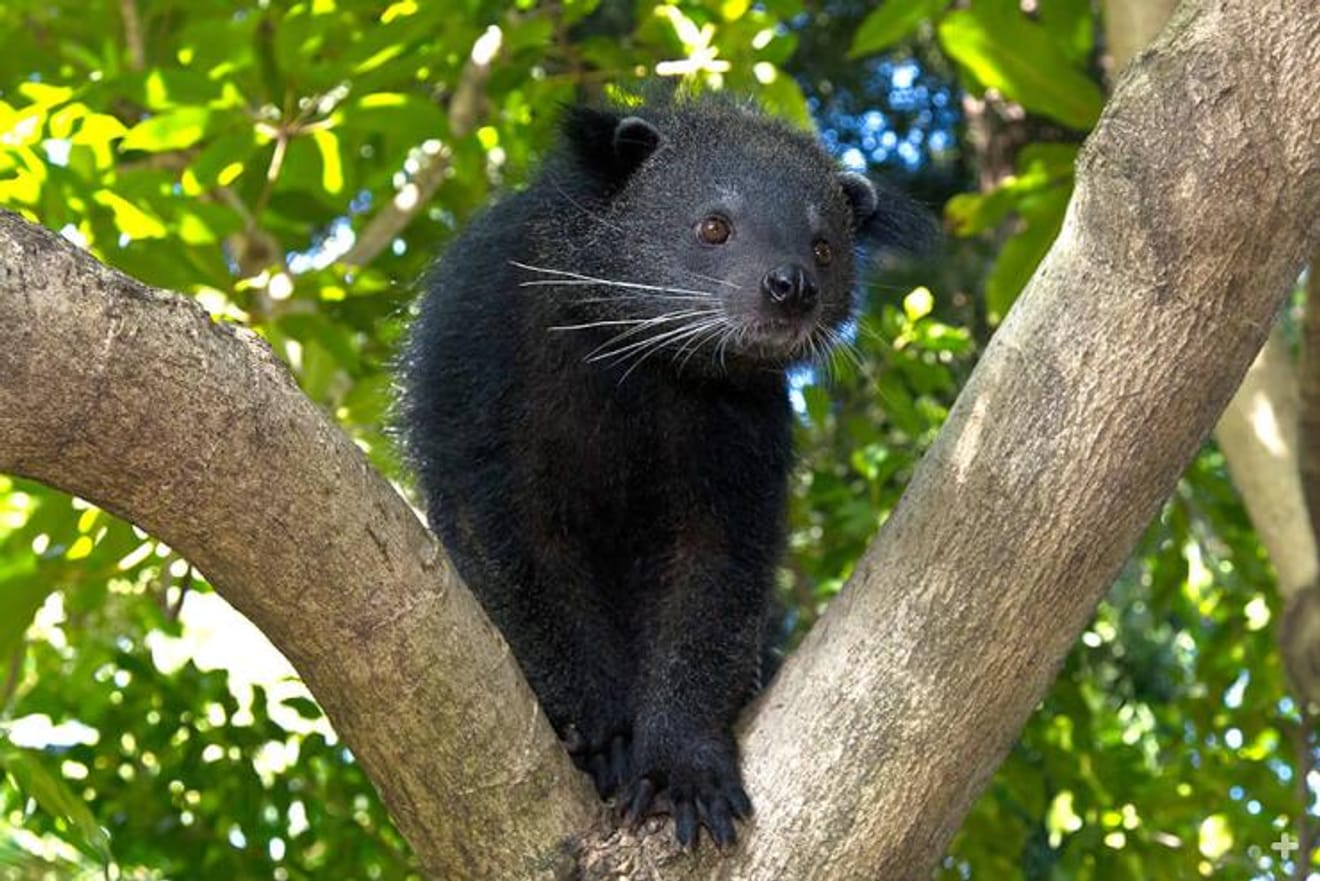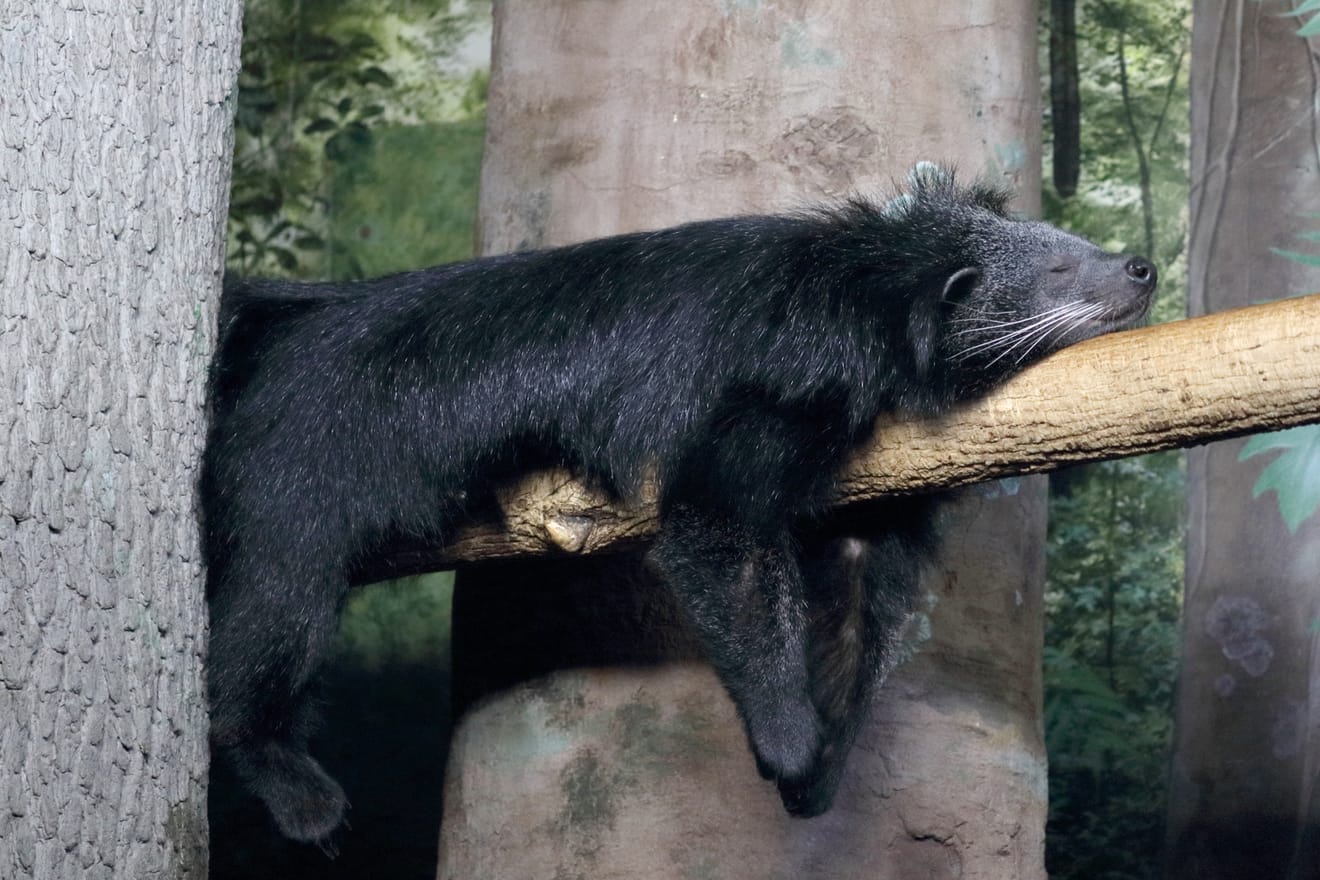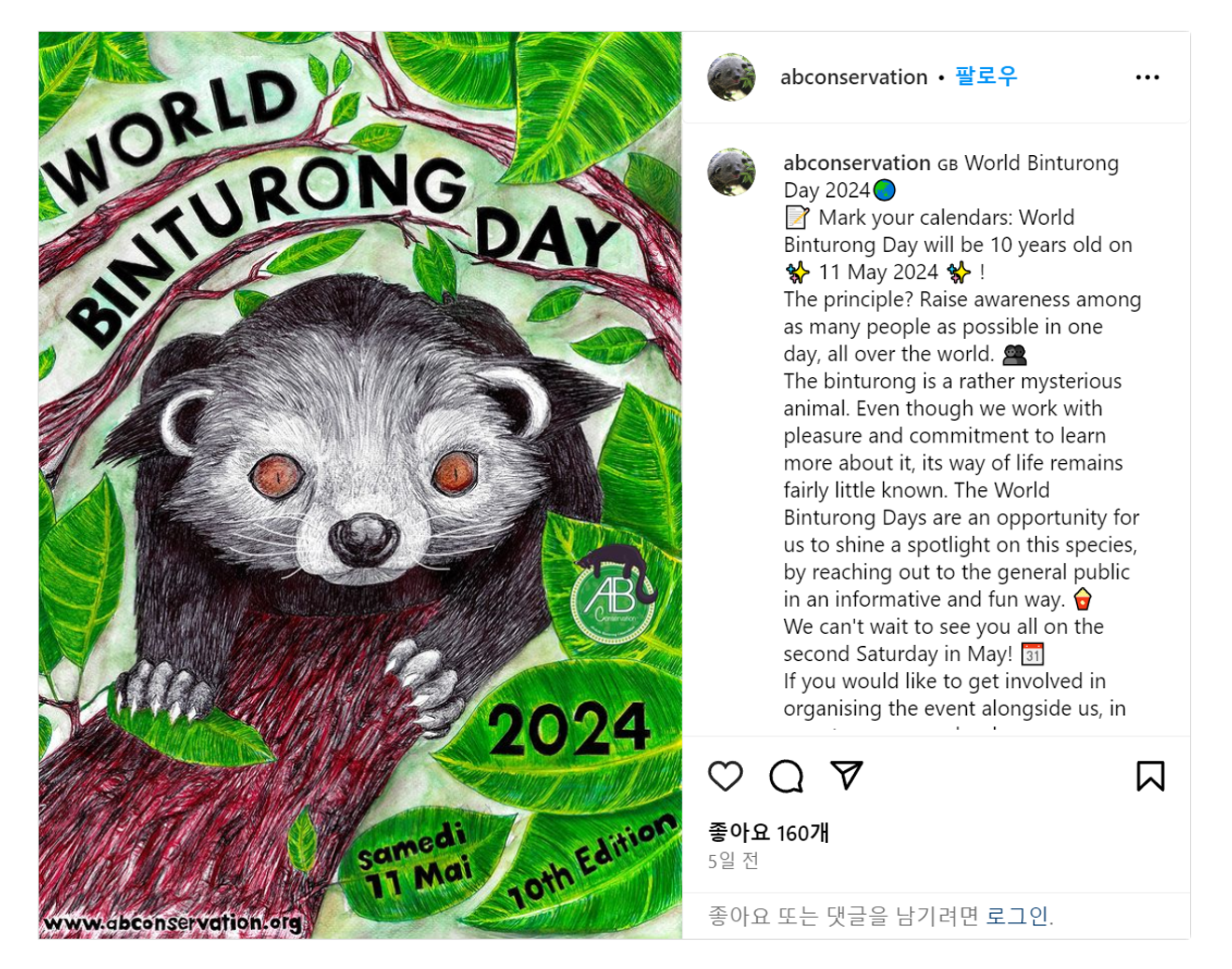Subject
- #Endangered Species
- #Binturong
- #Endangered
- #Bear Cat
- #Conservation Efforts
Created: 2024-02-01
Created: 2024-02-01 10:38

San Diego Zoo Wildlife Alliance Animals & Plants
Have you ever heard of an animal called a 'binturong'? Looking somewhat like a bear, a cat, and a monkey all at once, the binturong is also known as the bearcat. While it has a bear-like face, it is scientifically classified as belonging to the civet family. It hunts for creatures like earthworms and lizards in the forest, but its favorite food is figs. The binturong has a unique feature: its tail emits a sweet, buttery popcorn-like scent. This scent is used by the binturong for communication, and it actually originates from its urine. Interestingly, it's not just a resemblance to the smell of buttered popcorn; scientific analysis has shown that the same chemical compounds found in buttered popcorn are present in the binturong's urine. How fascinating!

By Greg Hume - Own work, CC BY-SA 4.0, https://commons.wikimedia.org/w/index.php?curid=60835976
Many people are drawn to the binturong's adorable, teddy bear-like appearance and express a desire to keep them as pets. However, the truth is that binturongs are an endangered species.
Listed as Vulnerable (VU) by the International Union for Conservation of Nature (IUCN), the binturong population continues to decline, and there's a high risk that it will face a severe extinction threat within the next few years.
As the enigmatic binturong gained wider recognition, the desire to keep them as pets increased, leading to a rise in illegal poaching. As a result, the binturong population has decreased by about 30% over the past 30 years. Similar to other civet species, binturongs are sometimes used in the production of civet coffee. The high price of civet coffee drives some people to hunt binturongs for economic gain. Furthermore, illegal poaching continues for their fur, meat, and bones.

IUCN
Beyond direct poaching, human activities indirectly contribute to the binturong's endangerment. Despite its impressive size, with a body length reaching nearly 1 meter and a tail exceeding 70 cm, the binturong primarily inhabits high trees, exhibiting remarkable agility and balance as it navigates branches, much like a monkey. However, deforestation driven by human development has significantly reduced the trees that binturongs rely on, jeopardizing their survival. Native to the rainforests and deep mountains of Southeast Asia, including Bangladesh, Indonesia, and Malaysia, binturongs have lost their habitat due to rainforest destruction, pushing them to the brink of extinction.

https://pia.gov.ph/news/2023/10/23/puerto-princesa-city-govt-to-manage-cleopatras-needle, Photo courtesy of City Information Department of Puerto Princesa
To address the binturong's extinction crisis, efforts are underway on Palawan Island in the Philippines to secure over 40,000 hectares of forest, protecting not only binturongs but also a wide range of wildlife. Known as Cleopatra’s Needle Critical Habitat (CNCH), this protected area benefits both the wild animals and the local indigenous communities.

ABConservation official Instagram capture
The non-governmental organization ABConservation is actively involved in fundraising efforts to support binturong conservation. They also organize an annual awareness campaign on the second Saturday of May, designated as Binturong Day. Hopefully, with increased attention from more environmental groups, we can secure the future of this enigmatic creature.
Comments0